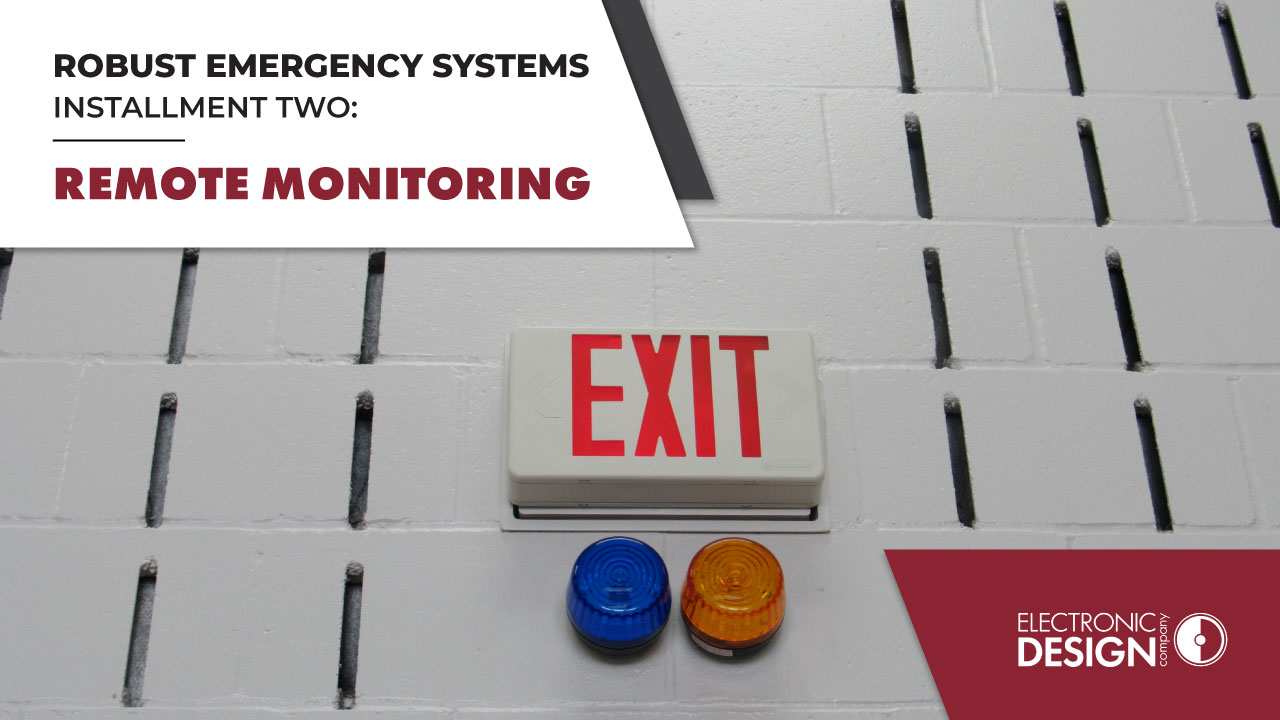
Robust Emergency Systems Installment Two: Remote Monitoring
December 22, 2021For paging systems, having the title of “emergency” to describe its type, indicates the importance of its operation. Unfortunate things do happen to electronics and wiring. Natural disasters, construction, prolonged power outages, as well as plain old age will eventually take its toll on even the most robust systems. It becomes a safety concern when these systems are not working or are only partially working. Remote monitoring can help notify people about potential problems and help correct deficiencies in an emergency paging system hopefully before an emergency event occurs.
How remote are we talking about? In some cases, the word, “remote” just means a reception or guard’s desk at the front of the building. Many times, the method used to remotely monitor the emergency paging system is by using contact closures that feed notification lights or other notification systems to trigger supervisory alarms. These alarms usually go to a central panel or monitoring system. The alarm is typically very generic and requires further investigation to determine its severity and urgency. Another downside of this type of remote monitoring is that it requires someone to be at this location and paying attention to the device giving the notification that there is something wrong.
In other cases, “remote” means off premises. In commercial type buildings, off premises monitoring has been around for emergency notification systems for a very long time. Fire alarm and security systems have been monitored via telephone direct dial lines for decades. If there is a trouble or an alarm state, the system would be programmed to dial a phone number to either a monitoring service or in some cases, directly to the fire or police department. These systems, however, have a very specific function and require very specific responses to their notification and there isn’t a lot of different alarm states. You either need an emergency response team to show up or you need a technician to fix a problem as soon as possible.
Ethernet technology has greatly increased how a system can be monitored. Data networks and devices are monitored using applications that ping these devices or using Simple Network Messaging Protocol (SNMP) to report device issues. The advantage of this type of monitoring is that it can be programmed to give many different types of alerts depending on the severity of the issue. Most modern-day emergency paging systems use audio digital signal processors (DSP) as their means of control and monitoring. Most DSPs are ethernet based and offer ways to provide data to network applications, send direct emails using SMTP, or even send data to cloud servers. These methods make remote monitoring a system’s status more automated and easier to troubleshoot. This sometimes allows the ability to diagnose and fix the issue over a remote connection without having to dispatch someone to the site.
For a system to be remotely monitored, off premises over a data network, there needs to be coordination. Network security is always a concern when trying to use the data network to control or send and receive data outside the internal local area network. Network firewalls help with this security but will also block the data sometimes required to make the remote monitoring work properly. Coordination needs to take place to make the network pass the data required and be secure. This may even affect the type of hardware that is installed and the system design.


